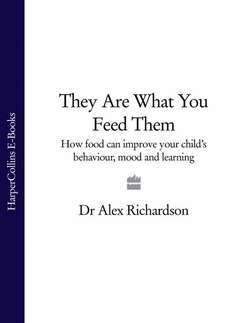Читать книгу They Are What You Feed Them: How Food Can Improve Your Child’s Behaviour, Mood and Learning - Dr Richardson Alex - Страница 72
Fancy Trying Polar Bear Liver? Think Again
ОглавлениеYou’ll suffer from:
a throbbing headache
stomach cramps
diarrhoea
drowsiness
irritability
dizziness
hair loss
enlargement of your spleen and liver…
…and to cap it all, before you die, your skin will peel off!
Why is polar bear liver so rich in vitamin A? Well, vitamin A originates in marine algae, and then passes up the food chain in ever-increasing concentrations until it reaches carnivores such as polar bears, seals and arctic foxes.
Being stuck in the arctic with only a dead polar bear to eat is unlikely for most of us, but be aware of the risk of vitamin A poisoning. Don’t misunderstand me: vitamin A’s vital for your health, but it isn’t water-soluble, so an excess can’t be excreted in your urine (as happens with vitamins B and C). It gets stored in the body instead. As with all nutrients, you need a balance.
Vitamins A, D, E and K are all fat-soluble, so any excess is stored in fat-rich body tissues, mainly the liver. Between them these vitamins are responsible for a vast array of functions. You can get them directly from organ meats, some fats (including those in dairy products and eggs) and nut or seed oils, but we make most of our vitamin D from sunlight (if we get enough!), and a healthy gut (if we have one) will house bacteria that produce vitamin K. Let’s see what these vitamins (should) do for your child.
